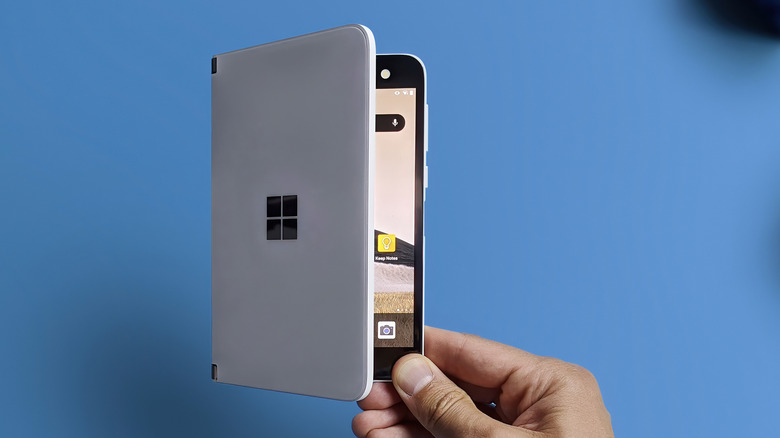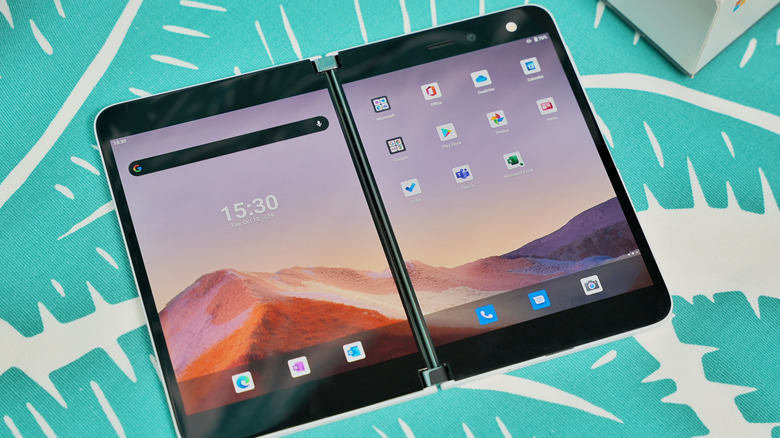Surface Duo Running Windows 11 Is Slowly Becoming A Reality
Once upon a time, Microsoft proudly revealed two dual-screen smartphones that nearly had fans and onlookers believing the company was on the cusp of a new era. What happened next would be a perfect fit for tech history books, and only one of those actually came to be. The Surface Duo has so far enjoyed two iterations, using Android to fulfill that dual-screen dream. The larger Windows-powered Surface Neo, on the other hand, is probably never going to happen, at least not anytime soon. That isn't stopping a few ardent developers, however, from trying to make it happen by forcing Windows to run on the Surface Duo, which seems to be close to becoming more usable at every step of the way.
A dual-screen device is probably a harder sell than a foldable phone like the Galaxy Z Fold. That idea was first given form with the Microsoft Courier concept that sparked the imagination and much fan-raving. Understandably, there was much disappointment when it was revealed that it would never come to pass, but the Surface Duo and Surface Neo were seen as its actual embodiment. Of course, Courier carried a user experience so far removed from today's operating systems that the Surface Duo only resembled it in physical form.
Even after two iterations, the Surface Duo's user experience leaves much to be desired in terms of stability and relevant features. Android was never designed with more than one screen in mind, so it is taking a lot of effort to retrofit the platform for that special use case. Windows might have a better chance in terms of software, but getting it to run new ARM-based hardware is non-trivial.
Windows 11 on Surface Duo
Fortunately, there are very zealous Windows hackers and developers who have never given up hope, even after Microsoft dropped the ball on Windows 10 Mobile. Gustave Monce, for example, has ported Windows 10, the full desktop version, to the Nokia Lumia 950 XL. Now he's doing the work to get Windows 11 running on the original Surface Duo, with increasingly positive results.
Monce shared the latest update on this effort on Twitter, revealing the latest version of Windows utilizing both of the Duo's screens as if one is an extension of the other. Interestingly, the video also proves how Windows 11 itself was made from the guts of what would have been Windows 10X, the version that should have run on the Surface Neo and other dual-screen Windows PCs. That explains the rather odd layout of the taskbar, for example, with everything crowding near the middle rather than the left-justified design that Windows has used since Windows 95.
A bit glitchy, but here we go pic.twitter.com/gyiZsSdzeD
— Gustave Monce (@gus33000) May 1, 2022
It isn't working perfectly well, though, with touch remaining the biggest missing feature. Those might be easier to fix now that Windows 11 is finally running on both screens. Sadly, this work focuses only on the OG Surface Duo, which has weaker hardware than the Surface Duo 2. Hopefully, porting to the more recent device will be easier once everything is in working condition.

